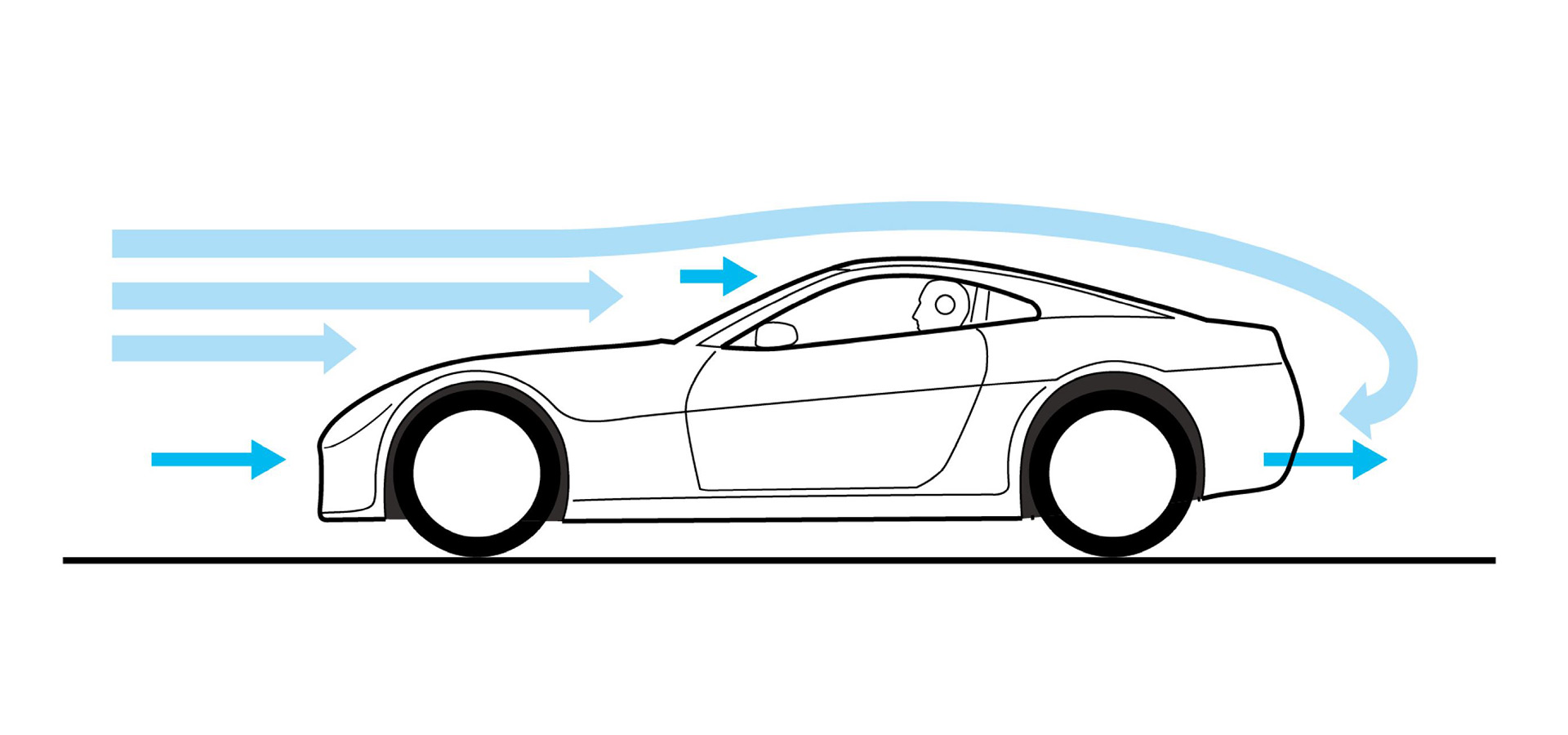The Effect of Air
Mechanics 12
How a car's size and design affect driving
Air resistance is proportional to speed squared. So, if speed is doubled, air resistance will be tripled, and if speed is tripled, air resistance will increase by a factor of nine. Because of this, in race cars and sports cars pursuing speed, and for passenger cars with a focus on fuel economy, the reduction of air resistance has major implications.
To reduce air resistance, it is best to optimize the shape of the car’s body, but there are some points that require care. Extreme streamlining to reduce air resistance is known to detract from stability when exposed to side winds, and can be dangerous, so a balance must be struck to ensure stability and control. Care must also be taken to prevent the occurrence of lift (aerodynamic force acting upward to lift the car), because the upper surface of the car body is an area where it is easy to produce the negative pressure that causes lift.
●Projected Frontal Area
Here are the silhouettes of a couple of vehicles as seen directly from the front. The bigger this area is, more wind will be hitting them while driving, resulting in more air resistance. The reason that sports cars are very low is to minimize this projected frontal area. Vans and minivans naturally have a disadvantage in this field because of their size.

Projected Frontal Area
●Cd Value – Air Resistance Coefficient
This is an aerodynamic coefficient that indicates how much drag is produced when a car is hit by wind. The Cd Value of a modern passenger car is generally around 0.3 or so, but with ever-increasing exhaust gas regulations and the demand for fuel economy improvement, manufacturers are aiming to reach Cd=0.2 in the near future.

Cd Value – Air Resistance Coefficient
●CL Value – Lift Coefficient
This is the coefficient of the force of air trying to lift the car when the car is exposed to wind. The opposite is downforce or negative lift, which is the force acting to push the car against the ground. We know from the theory of aerodynamics that increasing downforce requires the increase of air resistance. To a race car, downforce is extremely important, but not just in terms of the total amount. The balance between the downforce in the front and rear, as well as how this changes according to the driving conditions, has a similar impact on control stability.

CL Value – Lift Coefficient
●CYM value – Yawing Moment Coefficient
Air resistance while driving does not necessarily come only from the front. The yawing moment is the force that works to turn the car in the yaw direction when the car is hit by air coming from various directions. Cars that are not strongly affected by side winds will have a low CYM value.

CYM value – Yawing Moment Coefficient
